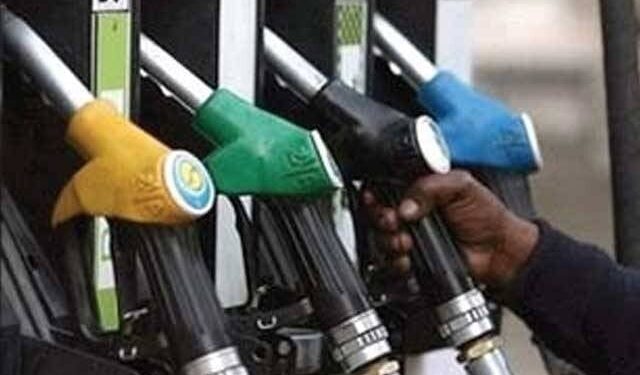Overview: Petroleum Prices Expected to Increase Across the Board
In a development that could directly impact the daily lives of millions of Pakistanis, the prices of petroleum products are likely to increase by up to Rs 5.50 per liter for the upcoming 15-day pricing cycle. The hike is expected as part of the regular fuel price adjustment mechanism, which is tied closely to trends in the international oil market and currency fluctuations.
According to official sources, Oil Marketing Companies (OMCs), under the umbrella of the Oil Companies Advisory Council (OCAC), have compiled a working paper outlining proposed price adjustments for various petroleum products. The recommendations are based on recent increases in global oil prices as well as local currency depreciation.
OGRA to Forward Summary for Approval
The Oil and Gas Regulatory Authority (OGRA), which is responsible for regulating and monitoring Pakistan’s oil and gas sector, is expected to send its pricing summary to the government today. The summary will be based on the data provided in the working paper by OMCs and will take into account factors such as:
- Global crude oil prices
- Import parity prices
- Exchange rate movements
- Freight and premium costs
- Inland freight equalization margins
- Taxes and levies
Upon review, the summary will be sent to Prime Minister Shehbaz Sharif, who will make the final decision on the revised prices.
Once approved, the new petroleum prices will be implemented at midnight, becoming effective for the next 15 days.
Proposed Price Increases for Key Petroleum Products
The expected price revisions, as per the OCAC working paper, are as follows:
- High-Speed Diesel (HSD): Likely to increase by Rs 5.27 per liter
- Petrol (Motor Gasoline): Expected to go up by Rs 1.12 per liter
- Kerosene Oil: Proposed increase of Rs 4.16 per liter
- Light Diesel Oil (LDO): Estimated rise of Rs 4.13 per liter
These increases, although seemingly incremental, will add to the financial burden of citizens, especially those reliant on diesel for agricultural and transport purposes and kerosene for domestic energy use in rural areas.
Impact of Global Oil Prices and Dollar Exchange Rate
The price hike is primarily being attributed to two main factors:
1. Rising Global Crude Oil Prices
Over the past few weeks, international crude oil prices have seen an uptick, with Brent crude hovering around $84–$86 per barrel, driven by multiple factors such as:
- Geopolitical tensions in the Middle East and Eastern Europe
- Supply constraints by OPEC+ countries
- Seasonal demand spikes as summer driving season peaks in the West
These factors have contributed to increased procurement costs for Pakistani oil importers, who pass on the cost to consumers through the fuel pricing mechanism.
2. Pakistani Rupee Depreciation
A weaker Pakistani Rupee against the US Dollar further compounds the issue. Since oil is traded globally in dollars, even a minor dip in the rupee can significantly increase the cost of oil imports, putting pressure on the national exchequer and domestic oil prices.
Public Reaction: Concerns Over Inflation and Cost of Living
The anticipated fuel price hike has already sparked concern among consumers and businesses, as rising fuel costs have a domino effect on virtually all sectors of the economy.
- Transport costs increase, leading to higher fares for commuters and freight.
- Food prices soar, as agricultural produce becomes more expensive to transport.
- Utility bills rise, particularly for industries using diesel generators amid frequent power outages.
- General inflation ticks upward, affecting purchasing power and household budgets.
In a country where headline inflation is already in the double digits, another fuel price increase is bound to exacerbate the cost-of-living crisis for ordinary citizens.
Historical Context: Frequent Price Adjustments in 2024–2025
This potential increase would be the latest in a series of fuel price adjustments that Pakistan has witnessed in the current fiscal year. Petroleum prices in Pakistan are reviewed twice a month — on the 1st and 15th of each month — as part of a semi-monthly review mechanism introduced by the government in line with IMF recommendations for economic transparency and real-time adjustment to global markets.
Over the past year, petroleum prices have fluctuated dramatically:
- In early 2024, petrol prices were as high as Rs 290 per liter, sparking nationwide protests.
- The government had temporarily reduced prices during Ramadan and Eid-ul-Fitr as a relief measure.
- However, with global oil prices rebounding and IMF-mandated revenue collection targets, authorities are once again compelled to adjust domestic prices upward.
Fiscal Implications for the Government
While rising fuel prices are a source of discontent for the public, they also offer a source of revenue for the government. The government collects:
- Petroleum Development Levy (PDL)
- General Sales Tax (GST)
- Customs duty
As part of the current fiscal targets agreed with the International Monetary Fund (IMF), the government is expected to increase the petroleum levy to raise non-tax revenue, helping reduce the fiscal deficit.
However, critics argue that excessive reliance on indirect taxation via fuel disproportionately affects the poor and middle classes, who bear the brunt of inflation.
Political Ramifications: Pressure on the PML-N-led Coalition
The expected fuel price hike also comes at a politically sensitive time. The PML-N-led coalition government, already facing mounting pressure over inflation, power outages, and unemployment, is likely to face public criticism and street protests.
Opposition parties, particularly Pakistan Tehreek-e-Insaf (PTI) and Jamaat-e-Islami, have already signaled their intent to organize protests if prices rise further.
The government, on the other hand, maintains that global economic conditions and IMF constraints leave it with little room to maneuver.
What Happens Next: Timeline of Events
Here’s a brief timeline of what to expect in the coming days:
- June 16, 2025: OGRA submits summary to the Prime Minister’s Office.
- Same day: Prime Minister reviews and approves or revises proposed changes.
- June 16, midnight: New prices announced via official notification by the Ministry of Finance.
- June 17–30, 2025: Revised prices remain effective for the rest of the fortnight.
Expert Opinions and Market Watch
Energy analysts suggest that if current trends in the international oil market continue, Pakistan may have to brace for more fuel price increases in the coming months, especially during the high-demand summer season.
Some policy analysts have urged the government to consider:
- Fuel subsidies for public transport
- Targeted assistance for low-income households
- Promotion of electric vehicles and alternative fuels
- Strategic petroleum reserves to buffer price shocks
These suggestions, however, require long-term planning and fiscal discipline, which may not be feasible in the current economic environment.
Conclusion: Rising Fuel Prices Pose Challenges for Pakistan’s Economy and People
The potential increase in petroleum product prices by up to Rs 5.50 per liter is a stark reminder of the fragile economic situation Pakistan is navigating. While the rise reflects external global market conditions, the domestic implications are immediate and severe, particularly for working-class citizens and small businesses.
As the government balances IMF obligations with public expectations, the next few weeks will be crucial in determining not just fuel prices but the broader trajectory of inflation, political stability, and economic recovery in Pakistan.

























